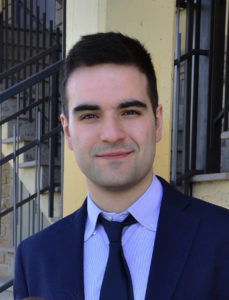 Name: Carlo Liorni
Name: Carlo Liorni
Birth place: Viterbo, Italy
Project: Long-distance quantum key distribution over integrated satellite-repeater links
Place: Heinrich Heine Universität, Düsseldorf, Institute für Theoretische Physik III
Supervisor: Dagmar Bruß (Theoretical Physics Group Website)
Co-supervisor: Hermann Kampermann
I was born in 1992 in a village in the Tuscia countryside, in central Italy. I obtained my Bachelor’s and Master’s Degrees at “La sapienza” University of Rome. For my Master’s Thesis I worked in the Quantum Optics group at “La Sapienza”, led by Prof. P. Mataloni and F. Sciarrino. My main scientific interests are Quantum Optics, Quantum Information, Quantum Communication and Computation.
ESR 9: Long-distance quantum key distribution over integrated satellite-repeater links
Quantum Key Distribution allows, from a theoretical point of view, to achieve unconditional security in telecommunications. While the security of the most used public-key classical cryptographic protocols relies on the assumption that some mathematical problems are “hard to solve” with currently available calculators, QKD can be proved to be secure without imposing any constraint to the power of an adversary eavesdropper. To bring this technology to the level of real-world implementation, the performance of current QKD protocols must be increased, concerning both reachable distances and rates.
In this research project I will perform a comparative analysis of the performances of quantum repeater (fibre-based) and satellite (free-space) links for QKD. The repeater-based implementation can take advantage of the well-developed optical fibre network currently used for classical communication. It has already been studied thoroughly in theoretical and experimental works, showing its limitations when it comes to long-distance communication. Satellite links becomes necessary for inter-continental communication, taking advantage of the relatively low levels of losses and decoherence induced by the presence of the atmosphere. With the help of experimentalists at Padova, a free-space link will be designed to simulate the satellite link. Security analysis covering the flaws of practical implementations (side-channels, finite key length, experimental parameters) will be carefully performed.
Like in classical communication, integration between different platforms is expected to be the best solution for achieving long-distance and wide-spread network. The optimization of such an integrated network will be studied, concerning performances, feasibility and cost.